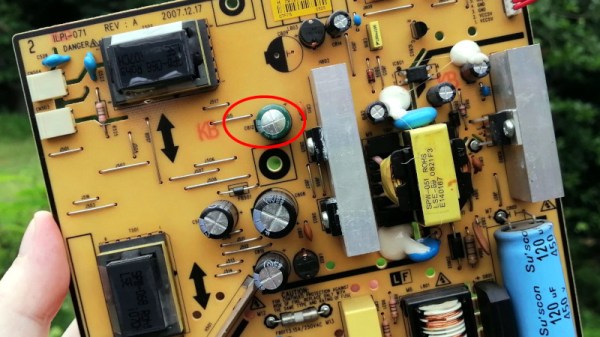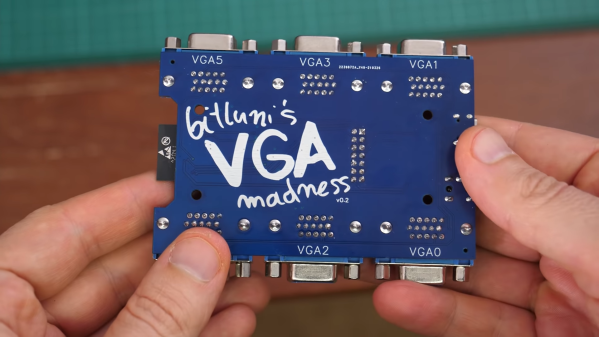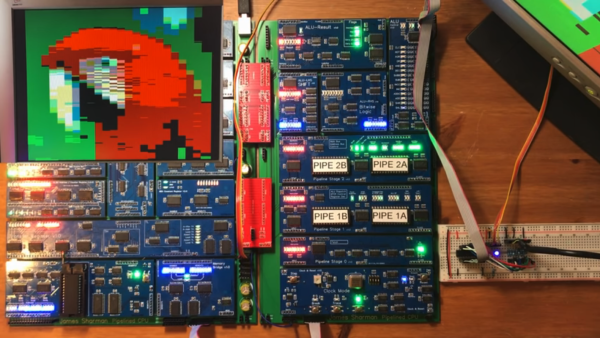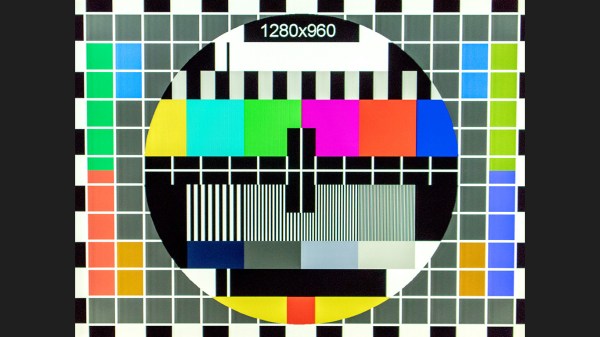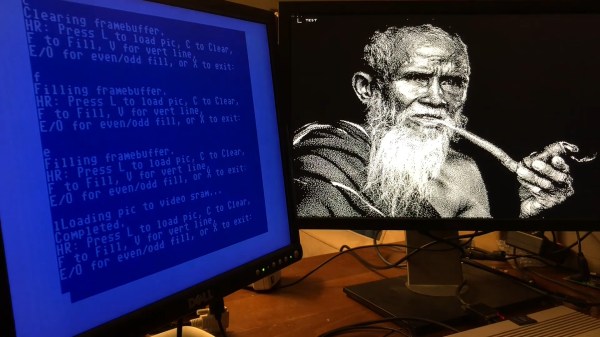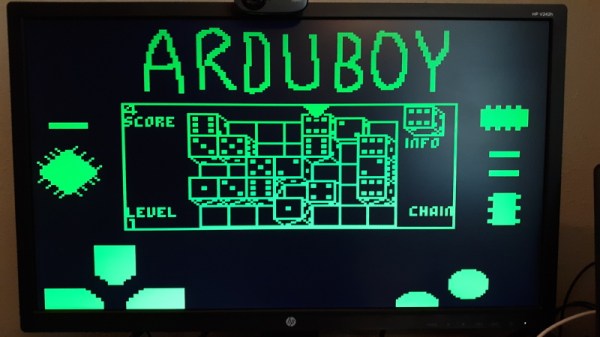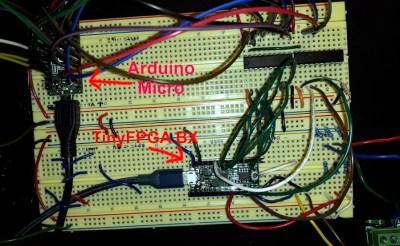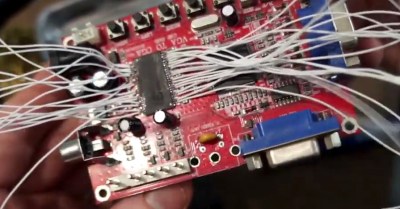It’s quite a while since any of us unpacked a brand new VGA monitor, but since so many machines still have the ability to drive them even through an inexpensive adaptor they’re still something that finds a use. With so many old VGA flat panel monitors being tossed away they even come at the low low price of free, which can’t be argued with. CNXSoft’s [Jean-Luc Aufranc] was tasked with fixing a dead one, and wrote an account of his progress.
Seasoned readers will no doubt be guessing where this story will lead, as when he cracked it open and exposed the PSU board there was the tell-tale puffiness of a failed electrolytic capacitor. For relative pennies a replacement was secured, and the monitor was fixed. As repair hacks go it’s a straightforward one, but still worth remarking because a free monitor is a free monitor.
We called the demise of VGA back in 2016, and have seen no reason to go back on that. But for those of us left with a few legacy monitors it’s worth remembering that DVI and thus the DVI compatibility mode of HDMI is little more than a digitised version of the R, G, and B channels you’d find on that trusty blue connector. Maybe that little dongle doesn’t make such a bad purchase, and of course you can also use it as an SDR if you want.

